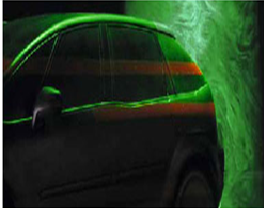Particle Image Velocimetry (PIV) is a non-intrusive laser optical measurement technique for research and diagnostics into flow, turbulence, microfluidics, spray atomization and combustion processes.
We offer complete measurement solutions for Particle Image Velocimetry applications with all the required elements integrated into turnkey systems. Standard Particle Image Velocimetry measures two velocity components in a plane (2D2C) using a single CCD or CMOS camera.
Stereo Particle Image Velocimetry measures three velocity components in a plane (2D3C) using two cameras.
Volumetric Velocimetry (also known as 3D PIV or Tomographic PIV) measures three velocity components in a volume (3D3C) using two, or more cameras.
Time resolved Particle Image Velocimetry benefits from the advances in CMOS camera technology to acquire high resolution PIV images at frame rates up to 25600 fps (frames per second) with full camera resolution.
Related techniques for measurements of flow fields are Particle Tracking Velocimetry (PTV), Feature Tracking and Feature PIV.
Micro Particle Image Velocimetry is used for flow studies in micro-channels in lab-on-a-Chip devices.

